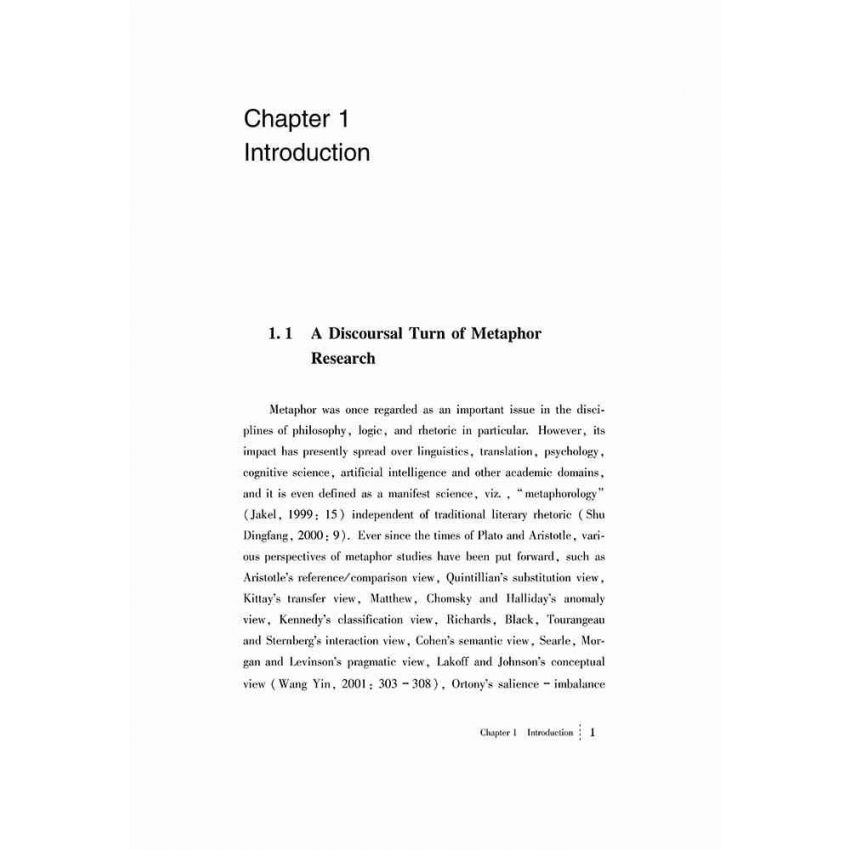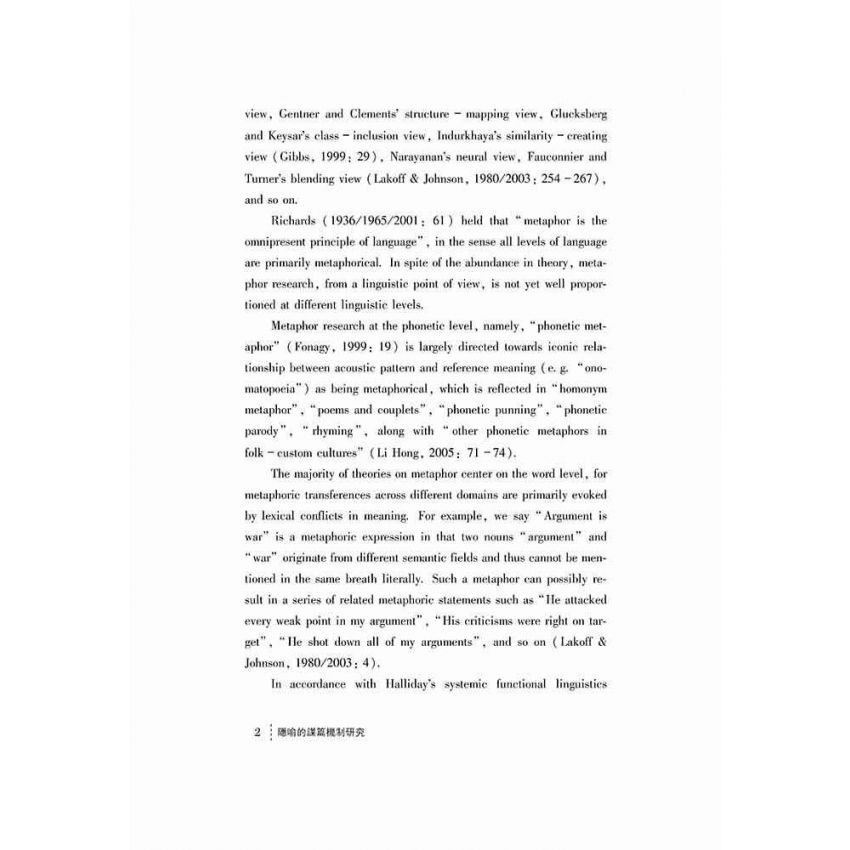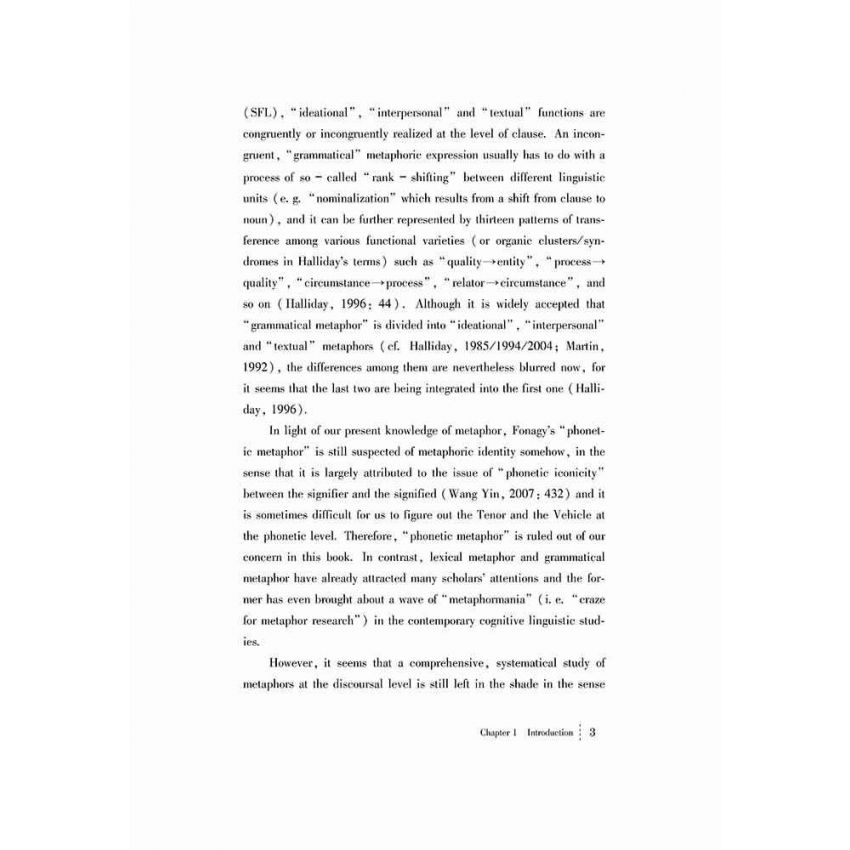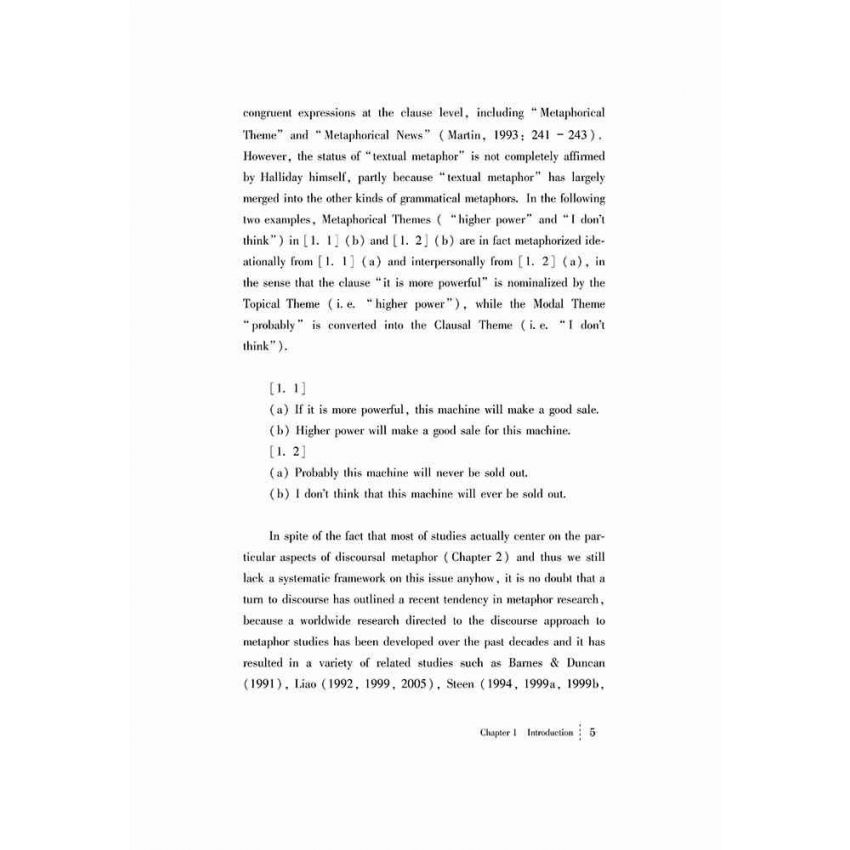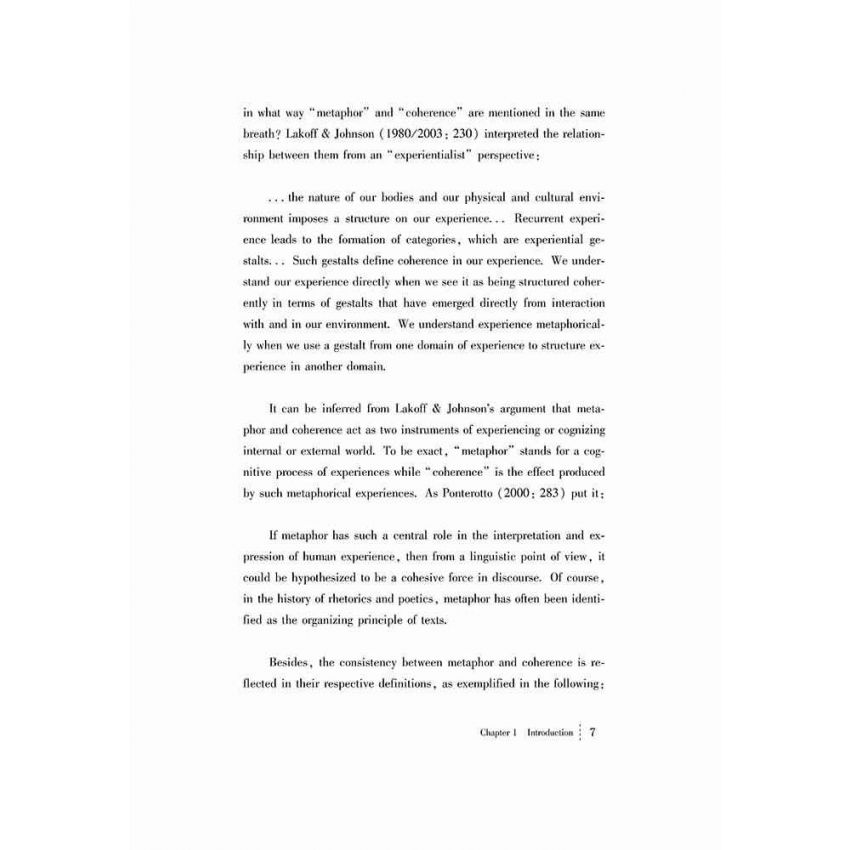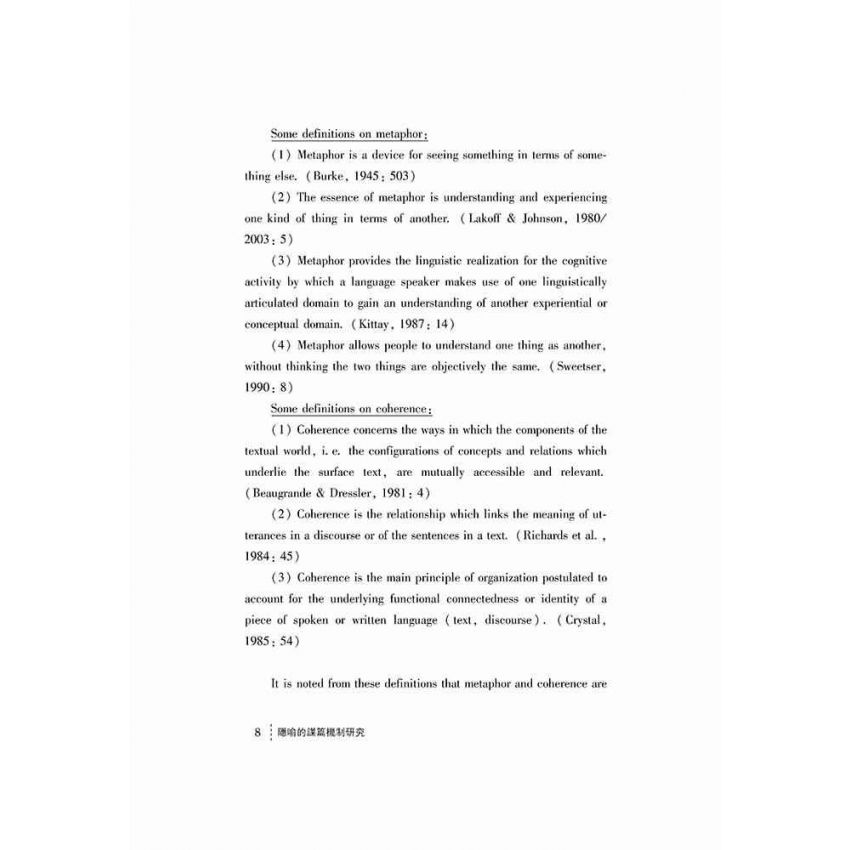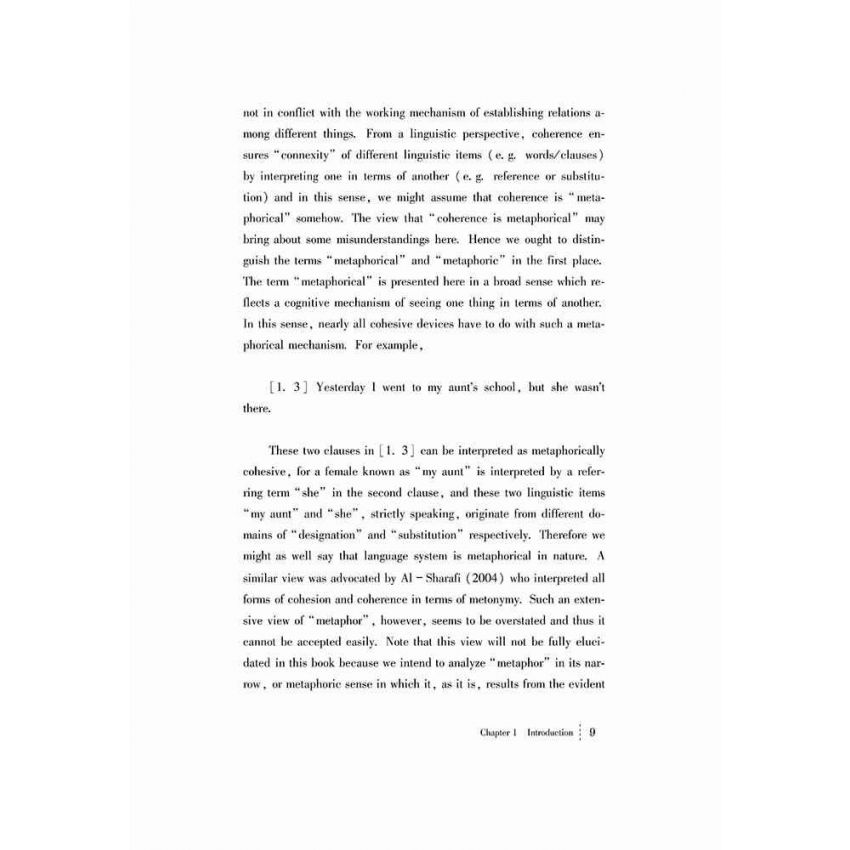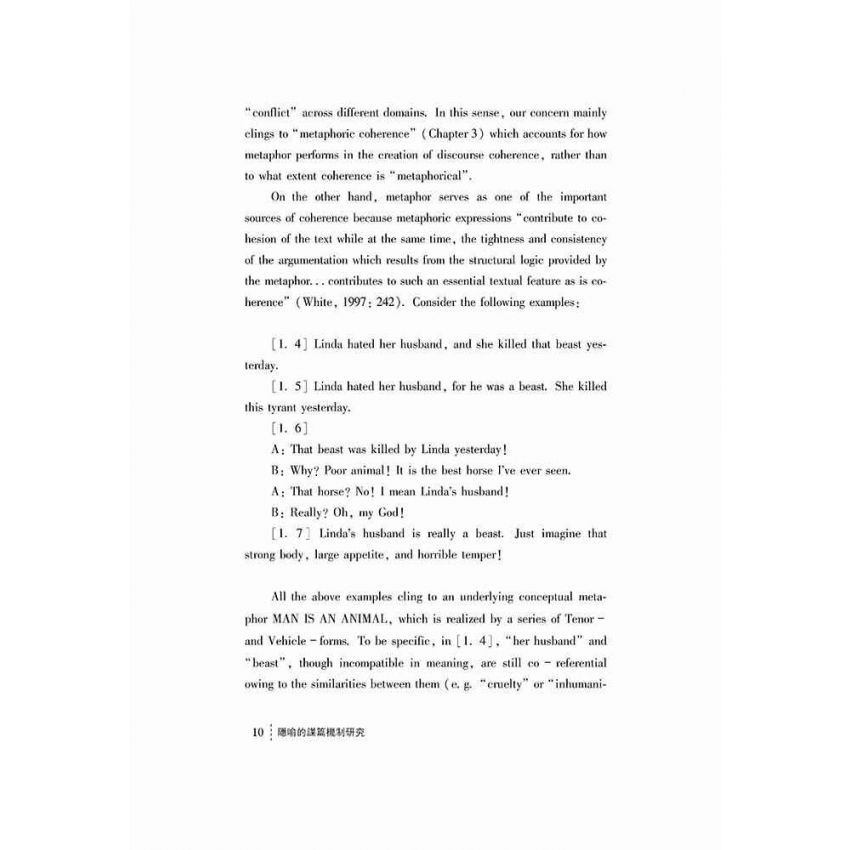- Chapter 1 Introduction(p.1)
- 1.1 A Discoursal Turn of Metaphor Research(p.1)
- 1.2 Metaphor and Discourse Coherence(p.6)
- 1.3 Aims of the Present Study(p.11)
- 1.4 An Overview of the Book(p.14)
- Chapter 2 Metaphor in Discourse Analysis(p.16)
- 2.1 Introduction(p.16)
- 2.2 Aspects of Discourse Functions of Metaphor(p.19)
- 2.3 Metaphor in Discourse Comprehension(p.26)
- 2.4 Metaphor in Discourse Construction(p.39)
- 2.5 Summary(p.54)
- Chapter 3 Towards A Metaphor Theoretical Ap-proach to the Study of Discourse Coher-ence(p.57)
- 3.1 Introduction(p.57)
- 3.2 Three Approaches to Coherence Research: An Overview(p.58)
- 3.3 An Integrative Study of Discourse Coherence(p.64)
- 3.4 Exploring Levels of Metaphors in Discourse(p.73)
- 3.5 Towards a Metaphor Theoretical Framework for Discourse(p.83)
- 3.6 Summary(p.88)
- Chapter 4 Semantic - level Metaphor in Discourse Coherence(p.91)
- 4.1 Introduction(p.91)
- 4.2 Metaphor Configuration in Discourse(p.93)
- 4.3 Metaphor Connection in Discourse(p.114)
- 4.4 Discourse Context and the Interpretation of SM in Discourse(p.133)
- 4.5 Summary(p.141)
- Chapter 5 Pragmatic - level Metaphor in Discourse Coherence(p.145)
- 5.1 Introduction(p.145)
- 5.2 Metaphor Recognition in Discourse: A Speech Act Approach(p.150)
- 5.3 Metaphor Negotiation in Discourse: A Conversational Analysis(p.184)
- 5.4 Situational Context and the Interpretation of PM in Discourse(p.202)
- 5.5 Summary(p.211)
- Chapter 6 Cognitive - level Metaphor in Discourse Coherence(p.214)
- 6.1 Introduction(p.214)
- 6.2 Metaphoric Mapping in Discourse(p.217)
- 6.3 Metaphoric Blending in Discourse(p.247)
- 6.4 Cognitive Context and the Interpretation of CM in Discourse(p.263)
- 6.5 Summary(p.273)
- Chapter 7 Conclusion(p.276)
- 7.1 Major Findings of the Present Research(p.276)
- 7.2 Major Implications(p.281)
- 7.3 Limitations and Directions for Future Studies(p.287)
- References(p.290)
本書在研究前人的理論模式的基礎上,通過改造和補充、完善構建出一個多層次研究隱喻的理論框架,包括詞彙語法層、語義層、語用層和認知層,隱喻在不同的層面上發揮不同的作用,即在認知層面上對隱喻進行投射和融合,在語用層面對隱喻進行識別和協商,在語義層面對隱喻進行構建和聯繫,最終由詞彙語法來體現。通過對不同層面上隱喻的表現來解釋和評價語篇的連貫。在其後的三章中,張瑋分別探討了隱喻在語義、語用和認知三個層面上對語篇連貫所作的貢獻。
部分內容為英文
| 作者 | 張瑋 |
|---|---|
| 出版社 | 元華文創股份有限公司 |
| 內文頁數 | 328 |
| 內文尺寸 | 18K-170x230mm |


燈籠魚網路書店
- 全館滿1000元免運,不滿1000元,每單酌收100元運費
- 燈籠魚進入印製流程後不接受取消訂單,下單前請務必確認購買內容
- 若有特殊狀況需要取消或更改訂單,請與燈籠魚客服聯繫


